Our Blog
Blog All Items Title
All Recent Articles
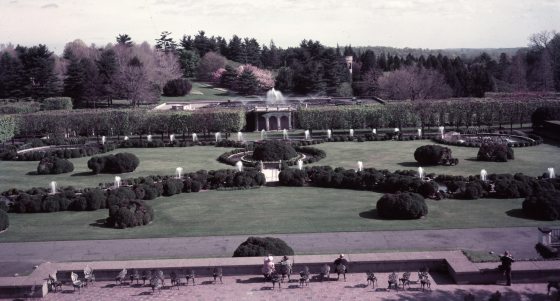
Maintaining Tradition: A Boxwood Story
The pinnacle of Pierre S. du Pont’s love for gardening is set to reopen next summer to the delight of thousands of eager guests. Meticulous planning went into the revitalization of the Main Fountain Garden, with much consideration given to preserving the legacy of Mr. du Pont and the property he purchased in 1906. In addition to saving the arboretum that the Peirce brothers started in 1798, Pierre became the steward of a large collection of boxwood that was planted among the trees leading to the Peirce home.
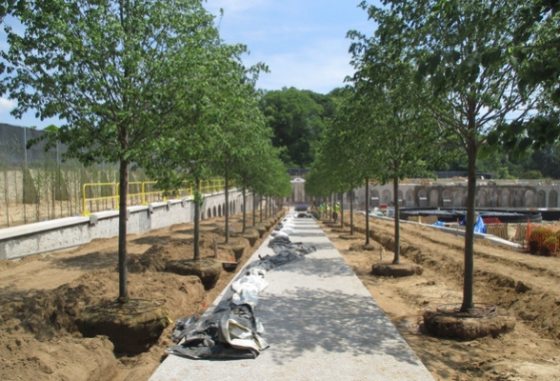
Super Soil: Designing Soil for the Main Fountain Garden
“Great soil is the foundation for a great landscape,” explains Claire Agre. A landscape architect, Agre is also a principal at West 8 urban design and landscape architecture, a design firm responsible for the execution of parks, gardens, waterfronts, and public spaces around the world. West 8’s latest project is to lead the landscape design of the Main Fountain Garden, including the planting of more than 2,600 boxwood in an exuberant hedge, 168 linden trees in Allee formation, and the development of additional pathways, furnishings, and fixtures for guests to enjoy. Great care was taken in all aspects of planning the Garden, from plant selection to bench design, but perhaps the most intensive aspect of the project was designing the soil upon which the Garden would thrive. But how does one design soil?
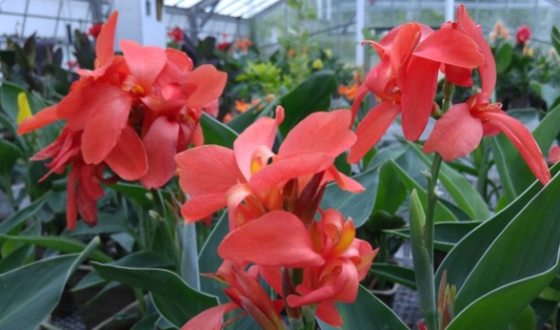
Introducing Canna ‘Longwood Simply Salmon’!
Our plant family is welcoming a new addition this summer: Canna ‘Longwood Simply Salmon’! This canna was bred here at Longwood and is being released commercially under the Longwood Gardens name. Canna is a genus of large tropical and sub-tropical rhizomatous perennial plants with showy flowers and foliage. Canna ‘Longwood Simply Salmon’ is a compact, virus-free cultivar with showy, salmon-colored flowers. Cannas have a strong presence at Longwood, as a favorite feature in our summer display. They also have a long history within our Research division.
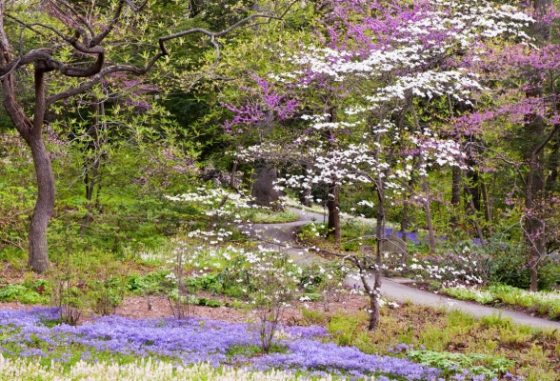
Peirce’s Woods in Bloom
I love this time of year in Peirce’s Woods, even though it feels like a non-stop race to pull all the weeds before they go to seed. The beauty of the woods in bloom makes me forget all that. Suddenly all the flowers in Peirce’s Woods have opened all at once. Peirce’s Woods is an art form garden, composed with native plants. The central design theme is large horizontal sweeps of groundcovers balancing the strong vertical lines of the mature tree trunks. Most of our native woodland flowers take advantage of the brief period in early spring before the trees fully leaf out to grow, flower and set seed. The two main groundcovers currently stealing the show are sweeps of white foamflowers (Tiarella) and ‘Sherwood Purple’ creeping phlox (Phlox stolonifera).

What Lies Beneath: A Deeper Look into an Engineering Marvel
Built in 1931 by Pierre S. du Pont, the Main Fountain Garden was inspired by Pierre’s passion for engineering and design, and his travels to European gardens. After years of deteriorating stonework, many fountain features were turned off—leading to limited access to the Garden since the early ‘90s. In order to save this treasure, we embarked on a major restoration project. This spring will mark the halfway point of the two-year revitalization. In this post, we will go below the surface of the Main Fountain Garden and explore some of the engineering behind the beauty.
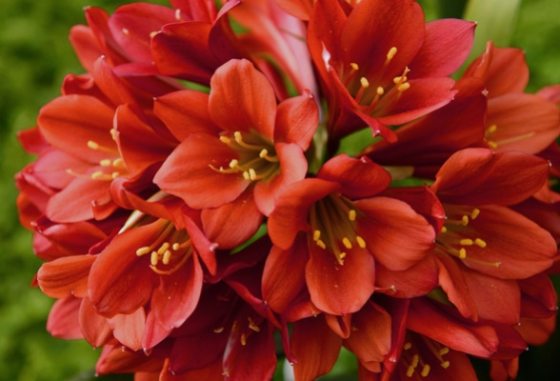
Introducing Clivia miniata ‘Longwood Chimes’
We are pleased to announce the release of Clivia miniata ‘Longwood Chimes’. This is the fourth named clivia introduction from our breeding program, which was started by Dr. Robert Armstrong in 1976. The flowers of ‘Longwood Chimes’ are a complex blend of bronze and burnt oranges with dark red overtones and a green throat. The red flush of the flowers, framed by leaves of dark olive green, deepens to dark red as the flowers age. ‘Longwood Chimes’ catches the eye of the clivia connoisseur and the novice alike. ‘Longwood Chimes’ will be on display on the fern floor in Exhibition Hall at the North American Cliva Show at Longwood on March 12–13, 2016. Because it is a plant that is slow to multiply, a limited number exist. This year Longwood Gardens will be offering a single plant of Clivia miniata ‘Longwood Chimes’ for auction on eBay. Bids will be accepted March 11–21, 2016.
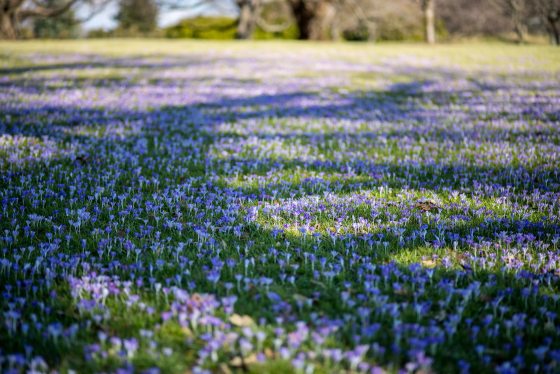
500,000 More Reasons to Love Spring
As February transitions into March, those of us in Southeastern Pennsylvania are looking everywhere for signs of spring. This year, the grounds of Longwood Gardens are providing a half million new reminders that spring is just around the corner. Last fall, our gardeners, students, and volunteers completed a massive effort to add 500,000 early spring bulbs to the landscape, and these bulbs are beginning to bloom now!

A Year in the Life of our Orchid Grower
My first year as the Orchid Grower at Longwood Gardens has been quite an adventurous one. This is a large collection to take on, and with its age and tradition, a very serious collection at that. Because of my background in retail orchid growing and the wholesale production of orchids, I was able to identify ways in which I wanted to restructure the culture and methods we use to manage the collection rather quickly.We have very big plans for the collection and its future growth. We are pursuing unusual and uncommon plants of high quality with tremendous aesthetic impact.
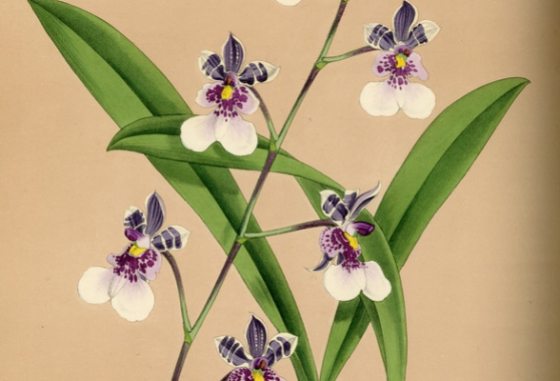
Pursuing a Passion for Orchids
When Pierre and Alice du Pont were married in October 1915, the Longwood estate already boasted beautiful outdoor flower gardens, the Open Air Theatre, and a brand new addition to the Peirce-du Pont House—a conservatory. Their passion for gardens was evident. Features that we associate with Longwood today, like dahlias, roses, topiaries, fountains, champion trees, and brilliant spring bulbs were already notable; however, there were no orchids.
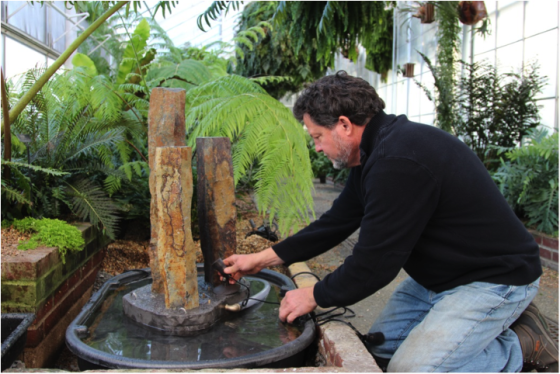
Ancient Beauty in our Fern Passage
This Christmas, our Fern Passage provides a natural twist on our fountain-inspired theme. To accentuate the subtle beauty of this ancient plant family, we have installed some very unique igneous stone fountains. Robert Wertz is the artist and owner of Igneous Rock Gallery in Mechanicsburg, PA, and the creator of this special display. Robert obtains his stone from a small lava deposit in the remote Beaver Canyon, located in the Okanagan Highlands of Washington State. The stone of Beaver Canyon is a vibrantly-colored columnar andesite that formed as a result of a volcanic eruption some 45 million years ago. It is unique in the world, and though Robert occasionally works with other types of rock, the Beaver Canyon columns are his preferred artistic medium.

Fountain Technology in the Jazz Age
It was the age of flappers and jazz … but at Longwood Gardens it was more about industrial-strength classicism and illuminated fountains, thanks to the vision of Pierre S. du Pont. Mr. du Pont was in the technology business of chemistry and automobiles. He was building skyscrapers, chemical factories, and assembly lines, so it wasn’t hard to adapt technology to make fountains spurt and glow. Longwood’s first fountain (1907), on the Flower Garden Walk, was supplied by gravity from a tank in the Peirce-du Pont House attic, which in turn was fed from a hydraulic ram at the Large Lake. No electricity was required since the power to push water uphill came from the water itself...
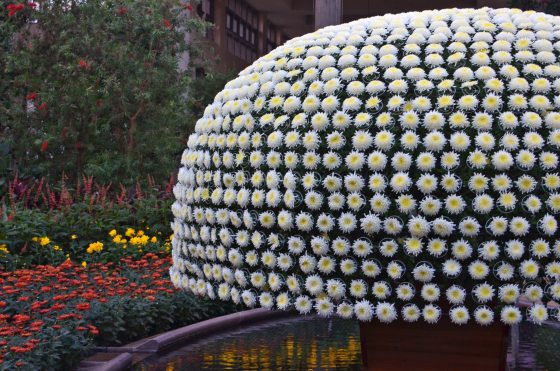
Cultures of Beauty
A life lesson here in Japan is that beauty is, without a doubt, in the eye of the beholder. Learning about the Japanese perception of beauty in contrast to our own has been a fascinating study in aesthetic. The chrysanthemum has provided us with the perfect subject matter to view these differences and has given us a whole new perspective on our own Chrysanthemum Festival at Longwood Gardens.
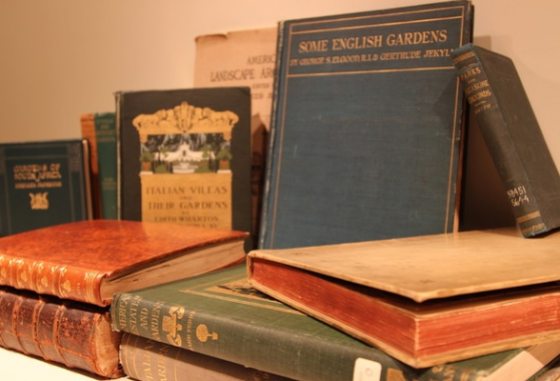
Fountains of Knowledge
Water—not only does it sustain us with the fruits of our gardens and fields, it elevates our lives with its elemental beauty. This dual nature of water is embodied in the Gardens and fountains of Longwood, where utility and wonder thrive side by side. Essential to life in the Gardens, water is also a wellspring of play and artistry that finds expression in our fountains, which are monuments both to nature and to human ingenuity. Such human ingenuity was a defining trait of Longwood’s founder, Pierre S. du Pont. And yet even the most imaginative ideas build upon the knowledge of what has come before. Pierre "collected" ideas for gardens and fountains during his many trips to Europe and to world's fairs, and then implemented them at Longwood, shaping them according to his own American vision and innovation. He also gained inspiration from the pages of his personal library, a tradition that continues today when staff, students, and volunteers step into the Longwood Gardens Library & Archives.
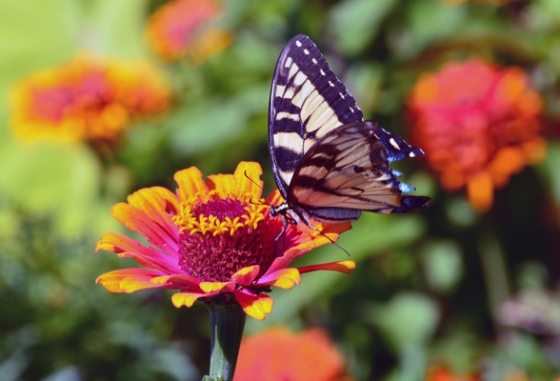
Gardens On Trial: And the Winner Is ...
Something new happened in the Trial Garden this summer. For the first time, Longwood staff members from throughout the Gardens were given the opportunity to design their own plant combinations. Those who participated had to select three to eight plants from a list of over 160 plant species and cultivars. With 26 different combinations, our guests had the difficult task of choosing their favorite three garden beds. Look to see if your vote was one of the winning combinations!
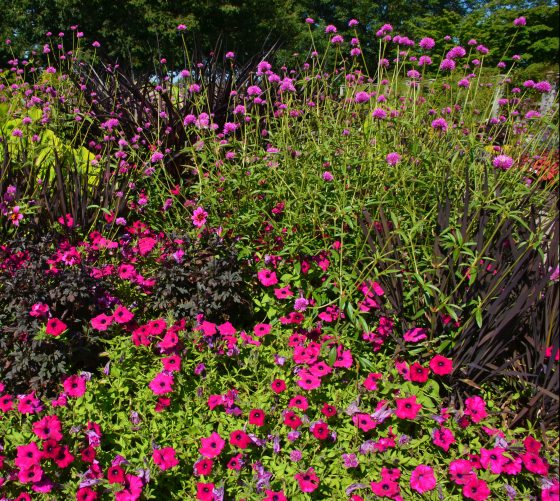
Gardens On Trial—You Be the Judge
This summer, Longwood Gardens is doing something new with our Trial Garden. We have always put the voting power in the hands of our guests, asking them to cast a ballot for their favorite plants. But this year, our guests will vote for combinations of plants, judging a friendly competition among staff members over who created the most beautiful garden beds. Teams and individuals entered the competition this spring, creating 26 unique plots for your viewing pleasure. Each garden uses anywhere from three to eight plants that were selected from a list of over 160 species and cultivars—many of which are tried-and-true Longwood favorites, but some of which are new to Longwood. Some designers took creative inspiration from their favorite genera, while others played with varying color themes or were inspired by travels to distant lands.
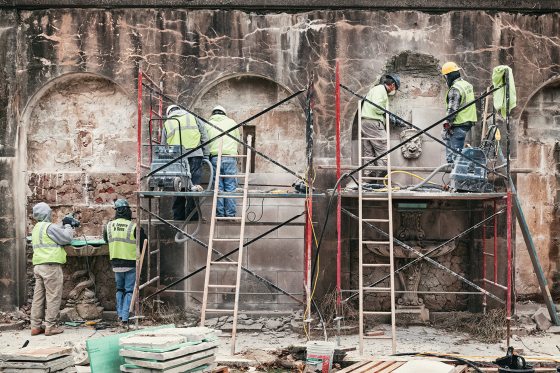
No Stone Un-Conserved
What are the components of a grand fountain garden? Dazzling water effects powered by hydraulic calculations, an inspiring design, and a stunning landscape are all parts of an unforgettable scene. For Longwood Gardens’ Main Fountain Garden (along with many other gardens built in the European tradition), sculpture is key to the Garden’s character, lending a unique and intimate quality. Each hand-carved stone is one-of-a-kind and tells a story of both the designer’s aesthetic as well as the artisan’s hand. As our Fountain Revitalization Project progresses, our trusted partners at Dan Lepore & Sons are the stewards of these cherished objects—cataloging, cleaning, conserving, and repairing more than 4,000 individual artifacts that will all eventually be returned to the Garden. This monumental task, like so many other components of the Fountain Revitalization, combines traditional craftsmanship with the latest advances in conservation and project management.
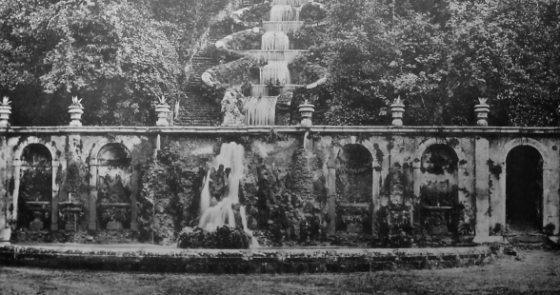
The Main Fountain Garden: From Old World Roots to New Heights
While visiting the Villa d'Este in 1913, Pierre S. du Pont, the founder of Longwood Gardens, announced, “It would be nice to have something like this at home.” This was a sentiment shared by other wealthy Americans visiting Europe around the same time. American residential landscape design in the late 19th and early 20th centuries—now known as the "Country Place Era"—was driven by these educated and well-traveled individuals who had the desire and means to build elaborate European-style estates at home. Mr. du Pont was developing Longwood Gardens not long after George Washington Vanderbilt II established the sprawling Biltmore Estate; at the same time, William Bowers Bourn II was constructing his country house, Filoli, and John D. Rockefeller was building this hilltop palace, Kykuit.
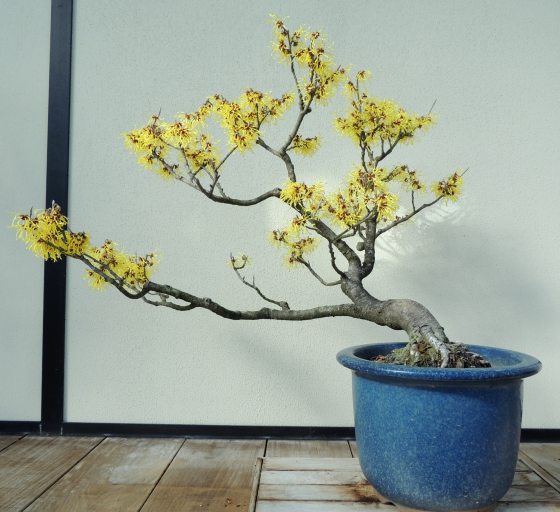
A Short History of Tiny Trees
The Japanese art of bonsai originated in China as the practice known as penjing. Early in Chinese history, trees and other plants were collected from the wild and grown in containers. The practice moved to Japan many centuries ago through social and economic interaction with China. Over the years, both countries developed various techniques that we continue to use in creating bonsai today. The Japanese word bonsai translates to "tree in a shallow pot." Though some plants in our collection date back to the early 1900s, bonsai were not part of our displays during the time of our founder, Pierre S. du Pont. In 1959, five years after Pierre’s death, renowned bonsai artist Yuji Yoshimura presented a class in our Continuing Education program. It was so well received that our staff members decided we should have some bonsai of our own.
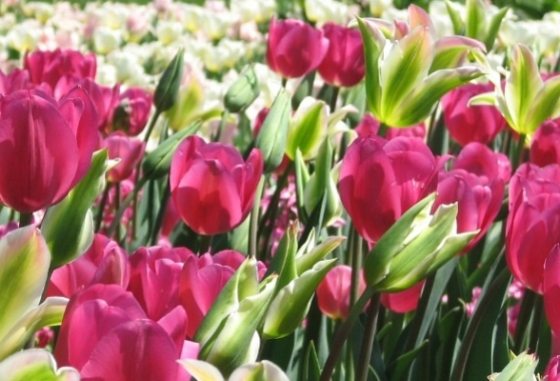
A Fresh Spring Mix
After a long winter, we’re finally seeing the spectacular colors of tulips throughout the Gardens. With color blocked borders of approximately 100,000 tulips every year, the display on the Flower Garden Walk is always an anticipated sight.
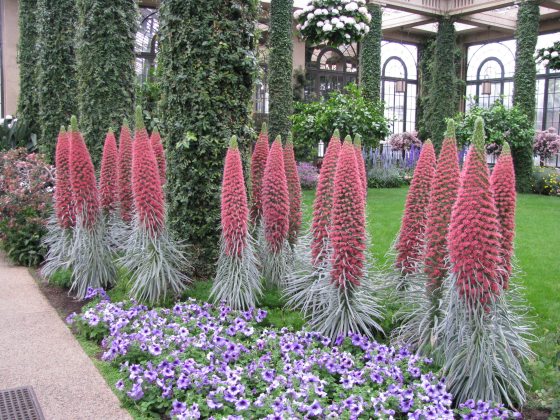
Bold and Beautiful: The Life of Echium Wildpretii
The beauty of our spring display would not be complete without the towering, striking, and unusual plant, Echium wildpretii, ‘tower-of-jewels’. While this plant stands at nearly seven feet tall, its tiny, salmon-colored flowers are what make it truly magnificent. As each tassel of flowers blooms into graceful curves along the plant, the stamens stick out as if dancing from the tiny flowers, transforming this tower-of-jewels into a whimsical display of beauty.